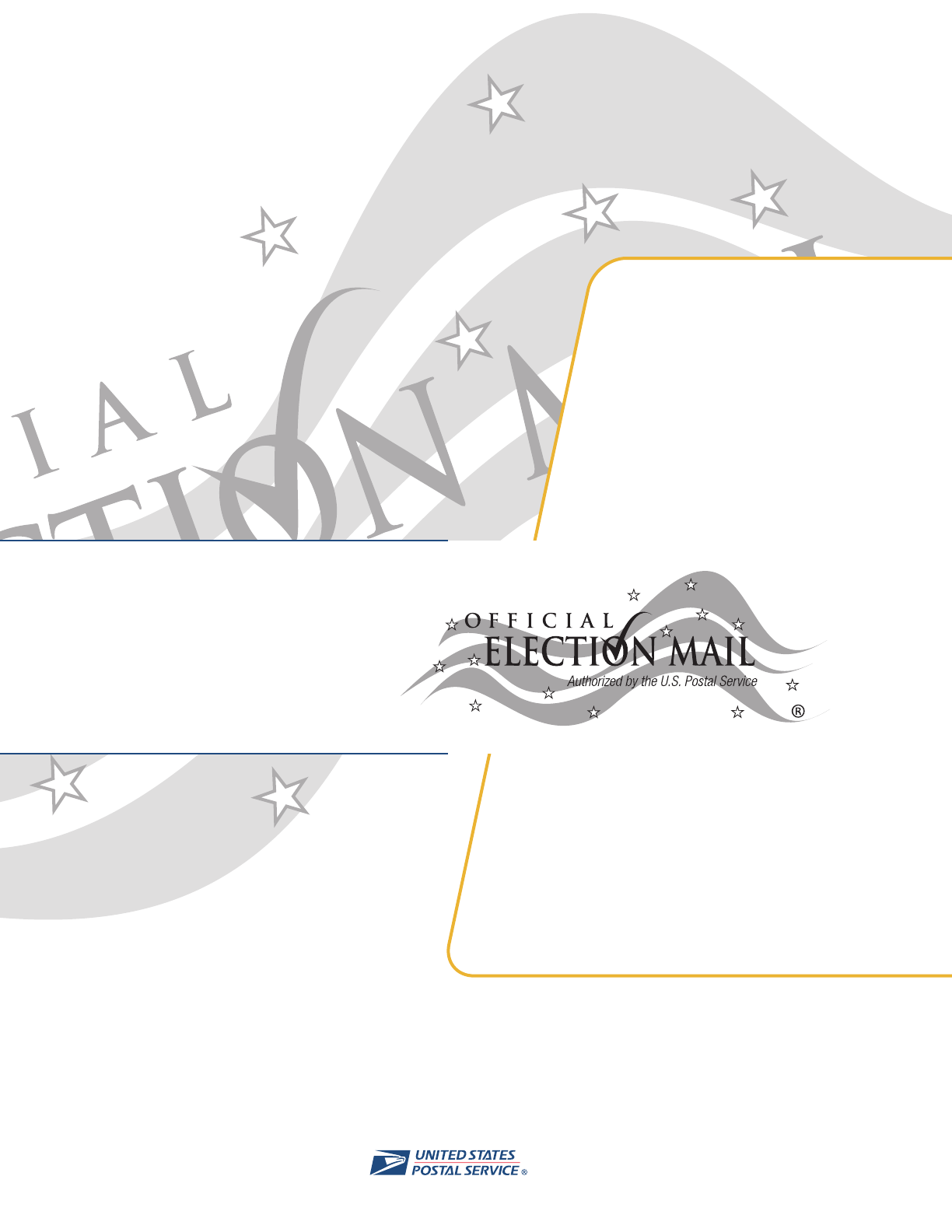
STATE AND LOCAL ELECTION
MAIL— USER’S GUIDE
January 2024
Publication 632

State and Local Election Mail User’s Guide
U.S. POSTAL SERVICE JANUARY 2024
2
PUBLICATION 632
Contents
How to Use This Guide .......................3
Section I.
Determining the Appropriate Class
of Mail to Use ............................4
What You Are Mailing ........................4
How Your Mailpieces Are Designed .............5
How Quickly You Need the Pieces Delivered ......5
How Many Pieces You Are Sending .............5
Whether You Want Free Forwarding and Return ...5
If You Need Extra Services ....................6
Section II.
Using Reply Mail and Sending Mail to Armed
Forces Personnel and Overseas Voters .......7
Business Reply Mail (BRM) and Qualied Business
Reply Mail (QBRM): ......................7
Courtesy Reply Mail (CRM): ..................7
Mailing Standards of the United States Postal
Service: ...............................7
Shortpaid and Unpaid Absentee Balloting Materials: 7
Absentee Balloting Materials for Military Personnel
and Overseas Voters: .....................7
Section Ill.
Preparing Your Address List ................8
Address Hygiene Tools ......................8
Physical Address Hygiene and Quality ...........8
Move Update Options .......................8
More Addressing Tips for Election Mailers ........9
Addressing Election Mail to Persons Overseas and in
the Military ............................10
Section IV.
Consulting with a Postal Service Manager
of Customer Relations to Plan the Mailing ...11
Consult with Your Local Postal Service Manager of
Customer Relations .....................11
Section V.
Required Forms for Postage Discounts
and Other Mailing Services ................12
For Postage Discounts, Use PS Form 3615 .....12
For Authorization for Nonprot Status, Use
PS Form 3624 .........................12
For Business Reply Mail, Use PS Forms 3615
and 6805 .............................12
Section VI.
Working with a Mailpiece Design
Analyst to Ensure Compliance with
Postal Service Standards .................13
Consult with a Mailpiece Design Analyst Before
Printing Your Envelopes ..................13
More Design Tips for Election Mailers ..........13
Design Resources .........................14
Section VlI.
Preparing and Presenting the Mailing .......15
At Least 2 Weeks Before Election Day (and
Preferably Earlier), Finalize Your Plans ........15
Section VIll:
Election Mail Checklist ...................16

State and Local Election Mail User’s Guide
U.S. POSTAL SERVICE JANUARY 2024
3
PUBLICATION 632
How to Use This Guide
You will nd eight sections in this guide. Each of the
following sections provides information election ofcials
must consider before they mail:
I. Determining the Appropriate Class of Mail to Use.
II. Using Reply Mail and Sending Mail to Armed
Forces Personnel and Overseas Voters.
III. Preparing Your Address List.
IV. Consulting with a Postal Service Manager
of Customer Relations to Plan the Mailing.
V. Filing Required Forms for Postage Discounts and
Other Mailing Services.
VI. Working with a Mailpiece Design Analyst to
Ensure Mailpiece Quality.
VII. Preparing and Presenting the Mailing.
VIII. Election Mail Checklist.
Each of the sections in this guide contains a brief
description of the topic, the most pertinent items to
consider, and references for additional information. You
can access the information in this guide and additional
resources on usps.com
.
See the following resources:
The Election Mail website at www.usps.com/
electionmail contains material for preparing
mailings, and direct links to the additional
references mentioned in this guide.
Postal Explorer at https://pe.usps.com contains
resources to aid in making informed decisions.
Mailing Standards of the United States Postal
Service, Domestic Mail Manual (DMM) at https://
pe.usps.com/DMM300/Index contains domestic
mail information and requirements.
Quick Service Guides at https://pe.usps.com/text/
qsg300/q000.htm contain concise explanations
and useful illustrations covering most Postal Service
requirements.
Postal Pro at https://postalpro.usps.com/ is an
online informational source available to postal
customers.

State and Local Election Mail User’s Guide
U.S. POSTAL SERVICE JANUARY 2024
4
PUBLICATION 632
Section I.
Determining the Appropriate Class of Mail to Use
The class of mail you use to send your pieces depends
on the following:
What are you mailing (e.g., ballots, newsletters,
voter registration)?
Does your mailpiece contain personal information?
How are the mailpieces designed (e.g., dimensions,
weight, card vs. envelope)?
How quickly do you need the pieces delivered?
How many pieces do you have?
Do you want free forwarding and/or return (if pieces
cannot be forwarded)?
Will you require extra services (e.g., Certied Mail
service, which provides you with a mailing receipt
and delivery status)?
The main classes of mail you will want to consider are
First-Class Mail and USPS Marketing Mail. Completed
ballots mailed by voters are First-Class Mail, regardless
of whether they are prepaid by election ofcials or
mailed with a stamp afxed by the voter. The only
situation where completed domestic, non-military ballots
are not First-Class Mail is when the voter opts instead
to pay for a premium service like Priority Mail or Priority
Mail Express.
The Postal Service strongly recommends that election
ofcials use First-Class Mail to mail ballots and other
Election Mailpieces to voters. Using First-Class Mail
allows for faster and more efcient processing while
maintaining high visibility as the Election Mailpiece
moves through the mailstream when used with USPS
visibility tools, like uniquely serialized Intelligent Mail
barcodes (IMb) or Ofcial Election Mail logo.
While we continue to recommend the use of First-
Class Mail, the Postal Service has long engaged in
several practices to prioritize ballots that are entered
as Marketing Mail, regardless of the paid class, when
capacity permits and when mailpieces are identiable as
ballots by the Ofcial Election Mail logo or other Postal
Service visibility indicia.
The Postal Service will continue to process and deliver
ballots expeditiously
, as we have done in past elections,
with the result being that ballots commonly receive
delivery timeframes similar to First-Class Mail even when
they are mailed as Marketing Mail.
The following table summarizes the important features of each class of mail
Class of Mail
Speed of
Service*
Free
Forwarding
and Return
Secure
Destruction Extra Services
Presort
Discounts
Single
Piece IMb
First-Class Mail 1–5 days Yes Yes Yes Yes Yes Yes
USPS Marketing Mail 3–10 days No No Only for Parcels Yes No Yes
Nonprot USPS
Marketing Mail
3–10 days No No Only for Parcels Yes No Yes
*Actual delivery times may vary depending on mail entry origin and destination.
What You Are Mailing
First-Class Mail: You may send mailable matter
using First-Class Mail service. Some types of mail
must be sent using First-Class Mail service (or Priority
Mail or Priority Mail Express). Examples include bills
and statements of account, most mail containing
handwritten or typewritten material, or mail that
contains information specic to the addressee or has
the character of personal correspondence. First-Class
Mail service is sealed against postal inspection. For a
full denition of what must be sent using First-Class Mail
service, see DMM 133.3.0 at https://pe.usps.gov/text/
dmm300/133.htm.
USPS Marketing Mail: USPS Marketing Mail is
available for mailable matter that is not required to
be sent as First-Class Mail, including advertising and
solicitations. For a full denition of what you can send
as USPS Marketing Mail, see DMM 243.2.0 at https://
pe.usps.gov/text/dmm300/243.htm.

State and Local Election Mail User’s Guide
U.S. POSTAL SERVICE JANUARY 2024
5
PUBLICATION 632
Nonprot USPS Marketing Mail: Under the National
Voter Registration Act of 1993 (NVRA), state and local
voting registration ofcials may use USPS Marketing Mail
to mail certain materials that are authorized or required
by the NVRA, and such mailings are eligible for Nonprot
USPS Marketing Mail prices, which are lower than the
regular USPS Marketing Mail prices.
For further information on what organizations are eligible
to use Nonprot prices and what kind of mail can be
sent at Nonprot prices, refer to DMM 703.1.0 at https://
pe.usps.gov/text/dmm300/703.htm and Publication 417,
Nonprot USPS Marketing Mail Eligibility: Nonprot and
Other Qualied Organizations at https://pe.usps.com/
text/pub417/welcome.htm
. Applicable customer support
rulings, such as PS-323, “Computer-Prepared Mailpieces
Entered by Authorized Nonprot Organizations,” can
provide additional guidance and can be found online at
https://pe.usps.com/CustomerSupportRuling/Index
.
How Your Mailpieces Are Designed
The contents, weight, size, and design of your mailpiece
will determine the category (e.g., letters, cards, and ats)
and class of mail. First-Class Mail may weigh up to 13
ounces. USPS Marketing Mail, including Nonprot USPS
Marketing Mail, must weigh less than 16 ounces.
Various presort discounts apply to both First-Class
Mail and USPS Marketing Mail. Additional discounts
are available for automation pieces, provided the
mailpiece meets the applicable automation compatibility
requirements. For further information, see DMM 201.3.0
(cards/letters) at https://pe.usps.gov/text/dmm300/201.
htm#ep1042622
and 201.6.0 (ats) at https://pe.usps.
gov/text/dmm300/201.htm#ep1097107
.
How Quickly You Need the Pieces Delivered
Most First-Class Mail is delivered within 1–5 days.
Most USPS Marketing Mail and Nonprot USPS Marketing
Mail pieces take between 3–10 days (overseas territories
13–18 days) to be delivered.
Work closely with your Postal Service Manager of
Customer Relations to determine the most likely delivery
times for your mailing.
How Many Pieces You Are Sending
There is no minimum for the number of pieces that may
be sent at First-Class Mail single-piece prices. If you have
at least 500 pieces in the same size category [letter-size
or oversize envelopes (ats)], you may be able to send
them at lower First-Class Mail presort prices. For further
information, see DMM 233 at https://pe.usps.gov/text/
dmm300/233.htm
. To send USPS Marketing Mail, you
need to have at least 200pieces or 50 pounds in the
same size category. For further information, see DMM 243
at https://pe.usps.gov/text/dmm300/243.htm.
Whether You Want Free Forwarding and Return
The Postal Service offers three options for how it treats
mail that cannot be delivered to the address on the
envelope. Mail can be forwarded to the new address,
returned to you, or discarded; however, the third option is
not available for Ballot Mail.
Option 1: Use the Forwarding Service Requested ancillary
endorsement to have Ballot Mail or other Election Mail
forwarded. The mailer must request forwarding service
through a printed ancillary service endorsement and/
or select the proper forwarding Service Type IDentier
(STID). If the mailpiece cannot be delivered and it does
not have a printed ancillary service endorsement nor a
STID requesting the correct forwarding address correction
option, the mailpiece will be returned to the sender.
Option 2: Utilize Return Service Requested to have
outbound Ballot Mail or other Election Mail automatically
returned to the election ofce. The mailer must
request return service through a printed ancillary
service endorsement and/or select the proper return
STID for the mailpiece.
Option 3: For most types of Election Mail, except Ballot
Mail, First-Class Mail may be discarded when Change
Service Requested is provided. Secure Destruction is
available for First-Class Mail that contains personally
identiable information. Learn more about Secure
Destruction on PostalPro at https://postalpro.usps.com/
mailing/secure-destruction
.
If you use First-Class Mail, the forwarding and/or return
services are free. First-Class Mail may be discarded only
when Change Service Requested is provided via Address
Change Service (ACS) (see Section III Preparing Your
Address List – Move Update Options). Change Service
Requested is not available for use on Ballot Mail. Note that
fees may apply for this service.
Undeliverable as addressed (UAA) USPS Marketing Mail
is typically discarded. If you want the mail forwarded or
returned, the mailpiece must have the appropriate ancillary
service endorsement printed on the address side of the
mailpiece, and you will be charged for each mailpiece
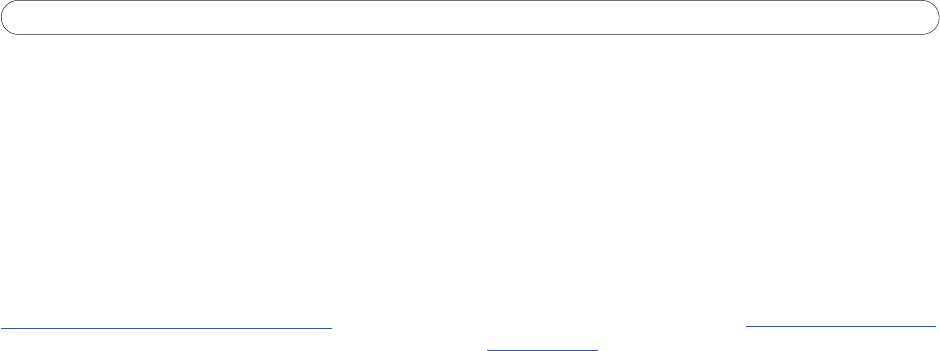
State and Local Election Mail User’s Guide
U.S. POSTAL SERVICE JANUARY 2024
6
PUBLICATION 632
that is returned. Additionally, for USPS Marketing Mail
containing ballots made to voters, you must use the
appropriate STID so that the Postal Service knows
whether to forward UAA Ballot Mail or to return it to the
appropriate election ofce.
For more information about ancillary service endorsements
and address correction services available, contact the
ACS Help Desk via email at [email protected] or by phone
at 877-640-0724, Option 1 and see DMM 507.1.5 at
https://pe.usps.gov/text/dmm300/507.htm.
If You Need Extra Services
The Postal Service has several service enhancements,
called extra services, available for use with First-Class
Mail service. Extra services can be purchased for an
additional fee. The extra service that is generally of most
interest to election ofcials is Certied Mail service. The
service provides the sender with a mailing receipt and,
upon request, electronic verication that the Postal Service
delivered or attempted to deliver the mailpiece. For further
information, see DMM 503.3.0 at https://pe.usps.gov/text/
dmm300/503.

State and Local Election Mail User’s Guide
U.S. POSTAL SERVICE JANUARY 2024
7
PUBLICATION 632
Section II.
Using Reply Mail and Sending Mail to Armed Forces Personnel and Overseas Voters
Business Reply Mail (BRM) and Qualied Business
Reply Mail (QBRM):
If you provide return envelopes for mail such as ballots,
consider using BRM or QBRM service. BRM is a First-
Class Mail service that enables you to pay the return
postage (including a per-piece fee) for those mailpieces
returned to you. You can distribute BRM cards, envelopes,
self-mailers, cartons, or labels and have them returned to
you at any Post Ofce. The mailpieces you distribute need
to conform to a specic format, including use of a unique
ZIP+4 code assigned by the Postal Service.
QBRM is best if you are anticipating an annual return mail
volume of approximately 613 or more return letters, or 610
or more cards. QBRM service provides you with discounts
on postage and per-piece fees; however, it applies only to
automation-compatible cards and letter-size mail weighing
up to and including 3.5 ounces. The design must be
approved by a Postal Service mailpiece design analyst
before distribution, and there are requirements for advance
deposits and accounting fees.
For more information on BRM and QBRM, see
Quick Service Guide 505, Business Reply Mail or
Qualied Business Reply Mail with Intelligent Mail barcode
Accounting (IMbA
TM
) Fact Sheet for
Election Mail located within Kit600, and
DMM 505.1.1.3 to 505.1.2 and 505.1.6 at
https://pe.usps.gov/text/dmm300/505.htm#1_0.
Courtesy Reply Mail (CRM):
CRM consists of pre-addressed postcards or envelopes
that you provide to voters both to expedite their responses
and to ensure their responses are sent to the correct
return address. CRM differs from BRM in that the voter is
responsible for applying the correct postage when mailing
back the reply piece and it does not require a permit
account or payment of fees. For further information, see
Courtesy Reply Mail Quick Service Guide 505a, https://
pe.usps.com/text/qsg300/Q505a.
Mailing Standards of the United States Postal Service:
Balloting materials for any election, whether disseminated
in hardcopy or electronically, must indicate in a prominent
location the proper amount of First-Class Mail postage
that must be applied, except in certain circumstances
for balloting materials for military and overseas voters
or where postage is prepaid. This information must be
included in the balloting materials (i.e., on the ballot, ballot
instructions, mailing instructions, or the envelope) with the
marking “First-Class Mail postage must be applied.”
Alternatively, the marking “Apply First-Class Mail postage
here” could be printed in the upper-right corner of
the address side of the envelope used by the voter to
return the marked ballot to election ofcials. The Postal
Service will also accept approved variations of the indicia
enumerated above.
The marking requirements will not apply to balloting
materials that meet one of the following exceptions:
The balloting materials fall under the special
exemptions for military and overseas voting.
The ballot is returned using Business Reply Mail.
Return postage is guaranteed through a postage due
account.
Postage on the ballot is prepaid by stamps, meter, or
Permit Reply Mail.
Shortpaid and Unpaid Absentee Balloting Materials:
Shortpaid and unpaid absentee balloting materials will not
be returned to the voter for additional postage. Postage is
collected from the election ofce upon delivery or at a later
date. The Postal Service will not delay delivery of balloting
materials with insufcient postage.
Absentee Balloting Materials for Military Personnel
and Overseas Voters:
You may send absentee balloting materials through the
mail without prepayment of postage for certain elections
when the absentee balloting materials allow eligible
persons in the following categories to apply for registration
and vote by absentee ballot when absent from their place
of voting residence:
Members of the Armed Forces in active service and
their spouses and dependents.
Members of the U.S. Merchant Marine and their
spouses and dependents.
U.S. citizens residing outside the territorial limits
of the United States and the District of Columbia
and their spouses and dependents residing with or
accompanying them.
You must prepare balloting materials in accordance with
DMM 703.8.0 at https://pe.usps.gov/text/dmm300/703.
htm#ep1174014
.
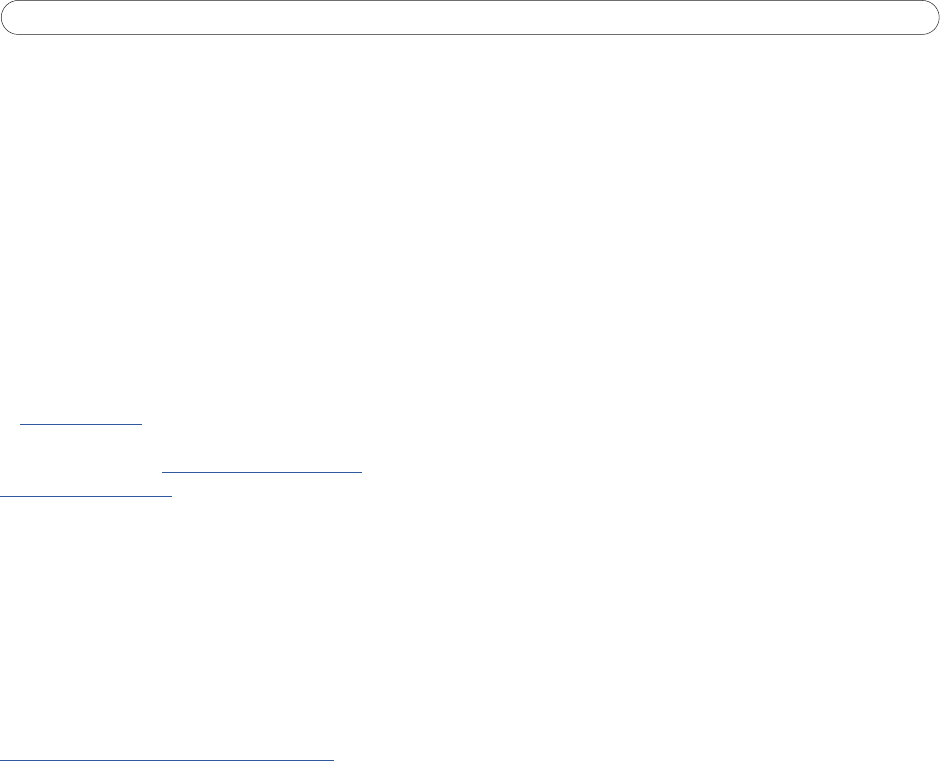
State and Local Election Mail User’s Guide
U.S. POSTAL SERVICE JANUARY 2024
8
PUBLICATION 632
Section Ill.
Preparing Your Address List
Having an updated, correct, and complete address list
will help ensure accurate and timely delivery of your
mail. By maximizing your address quality, you can also
minimize your mailing costs. The Postal Service has
established minimum standards for address quality for
certain postage prices.
Accurate and standardized addresses will help
reduce the amount of UAA pieces in your mailings.
To learn more about the correct way to standardize
your addresses, contact the ACS Help Desk via email
at [email protected] or by phone at 877-640-0724,
Option 1 and see Publication 28, Postal Addressing
Standards, online at https://pe.usps.com/text/
pub28/28c2_001.htm
.
Address Hygiene Tools
The Postal Service has a variety of products and
services that will help improve the accuracy of your
mailing lists, the quality of the physical addresses, and
provide Move Update information. These hygiene tools
are available through either the Postal Service or private
mail service providers licensed or certied by the Postal
Service. For information about address hygiene, go to:
https://postalpro.usps.com/address-quality.
Physical Address Hygiene and Quality
The following four products will help ensure that all your
addresses are deliverable — and identify those with
address deciencies:
a. Coding Accuracy Support System (CASS):
CASS-certied address matching software will
help standardize your addresses and update your
les with ZIP+4 codes. You can get CASS-certied
software from numerous mail service providers or
have your own software CASS-certied. Having
ZIP+4 codes on your mail improves the speed
and efciency of your mail delivery and can reduce
postage prices.
b. Delivery Point Validation (DPV): DPV can conrm
the existence of an address on a mailing list as a
valid delivery point and helps you identify inaccurate
or incomplete addresses. You must use the DPV
product in conjunction with CASS-certied address
matching software. DPV is available from various
vendors or can be acquired by the end user.
c. Address Element Correction (AEC): AEC is an
entirely computerized address correction process
which uses logic routines to assist in ZIP+4 coding
previously un-coded addresses, allowing mail to
qualify for discounted automation prices.
d. Address Element Correction II (AEC II):
AEC II is for addresses that AEC cannot resolve
electronically. In AEC II, addresses are sent to
delivery personnel, carriers, and clerks in local Post
Ofces for resolution.
Move Update Options
Mailers are required to update all addresses on
discounted First-Class Mail and USPS Marketing Mail
within 95 days before a mailing. The Postal Service
makes the following Move Update options available
to mailers at reasonable costs. You need to determine
which of the following methods work best for your
organization:
a. NCOA
Link
Systems: The NCOA
Link
process
provides change of address (COA) data, submitted
by customers who have moved and have notied
the Postal Service of a COA. Updated 18- or
48-month computerized COA information is
provided on a regular basis to the NCOA
Link
licensees by the Postal Service. NCOA
Link
is very
effective because it corrects your addresses before
you send your mailpieces.
NCOA
Link
— The NCOA
Link
product is a secure
dataset of approximately 160 million permanent
COA records consisting of names and addresses
of individuals, families, and businesses who have
led a change of address with the Postal Service.
Developed with secure data store technology to
increase security of postal customer data and

State and Local Election Mail User’s Guide
U.S. POSTAL SERVICE JANUARY 2024
9
PUBLICATION 632
protect the privacy of this information, the NCOA
Link
product enables mailers to process mailing lists
and update lists with new addresses prior to
mailing. The NCOA
Link
data is provided on a regular
basis to companies that have been licensed by the
Postal Service. For assistance with NCOA
Link
, email
or call 800-589-5766.
b. Address Change Service: ACS is an address
correction service that provides mailers a cost-
effective means of obtaining current COA
information when mail is UAA. ACS allows you
to update address les electronically, eliminating
the cost, time, and errors of manual keying. ACS
provides a data le that includes new address
information or the reason your mail cannot be
delivered (examples: “Attempted – Not Known”
or “Insufcient Address”). The Postal Service
will charge an electronic or automated address
correction fee for each address correction record
provided, unless mailers use Full-Service ACS.
With ACS, you get corrected information for your
mailpiece after the mailing. For more information
about ACS, go to https://postalpro.usps.com/
address-quality/ACS.
c. Ancillary Service Endorsements (ASE): ASEs
are used to request an addressee’s new address
and to provide the Postal Service with instructions
on how to handle your mail if it is UAA. “Address
Service Requested,” “Change Service Requested,”
and “Return Service Requested” endorsements
meet the Move Update standards and provide you
with the new address or the reason the mail cannot
be delivered through either a separate address
correction notice (PS Form 3547, Notice to Mailer
of Correction in Address)
for the return of your mail.
Manual address correction fees for return postage
may apply. For more information on ASE, see DMM
507.1.5 at https://pe.usps.gov/text/dmm300/507.
htm#ep1223780
.
NOTE: ACS and ASE are post-mailing updates,
and do not meet the Move Update requirement the
rst time you use it for the mailing. For an address
to meet the Move Update requirement using
ACS or an ASE, you must mail to your customers
at least once every 95 days and update the
addresses used on the mailpieces prior to the next
mailing. You must use an approved pre-mailing
method or mail the pieces at the single piece First-
Class Mail rate if it is more than 95 days in between
your mailings, or if this is the rst time you will
mail to an address not obtained directly from the
addressee (in the last 95 days).
Additional information on how to comply with the
Move Update standard can be found in the Guide
to Move Update at https://postalpro.usps.com/
moveupdate/guide and
DMM 602.5 at https://
pe.usps.com/text/dmm300/602.htm
.
More Addressing Tips for Election Mailers
If you are required by law to include certain
non-address related information on the outside of
an envelope, it must be placed outside the Optical
Character Read area to avoid interfering with the
readability of the delivery address and/or barcode. If
voter information must appear in the delivery address
block area (i.e., if address labels are used for both the
voter information and the delivery address), then the
voter information line must appear above the recipient
line of the delivery address.
A Postal Service Mailpiece Design Analyst (MDA) can
help you, at no charge, with this and other aspects of
proper mailpiece design. For help with mailpiece design,
connect with an MDA between 7:00AM – 7:00PM
Central Time by emailing [email protected] or calling
877-672-0007 (select option 2 for mailing and shipping,
then option 2 for MDA). Also, mailpiece
design information is available on PostalPro at
https://postalpro.usps.com/mailing/mailpiece-design-
analyst-mda-customer-service-help-desk.
For more information on Postal Service addressing
products and services, visit https://pe.usps.com/
BusinessMail101/Index?ViewName=Addressing
or contact:
NATIONAL CUSTOMER SUPPORT CENTER
UNITED STATES POSTAL SERVICE
225 N HUMPHREYS BLVD STE 501
MEMPHIS TN 38188-1001
TEL: 800-238-3150
FAX: 901-767-8853

State and Local Election Mail User’s Guide
U.S. POSTAL SERVICE JANUARY 2024
10
PUBLICATION 632
Addressing Election Mail to Persons Overseas and
in the Military
Foreign addresses except Canada: The last line of
the address on mail, including Election Mail, being sent
to a foreign country must contain the country name
printed in full, using capital letters. No abbreviations are
permitted. When using a foreign postal code, place it on
the line above the country of destination.
Example:
MR THOMAS CLARK
117 RUSSELL DRIVE
LONDON WIP 7HQ
ENGLAND
Canadian addresses: For mail addressed to Canada,
the last line of the address must show only the country
name, written in full (no abbreviations) and in capital
letters. There must be two spaces between the province
abbreviation and the postal code, as shown below
between ON and K1A OB1.
Example:
MRS HELEN K SAUNDERS
1010 CLEAR STREET
OTTAWA ON K1A 0B1
CANADA
For additional information on addressing mail to foreign
countries, consult Mailing Standards of the United
States Postal Service, International Mail Manual (IMM)
122 available online at https://pe.usps.com/text/Imm/
welcome.htm.
Military addresses: Overseas military and diplomatic
addresses must conform to domestic addressing
standards format, while also including the correct Air
Force/Army Post Ofce (APO), Fleet Post Ofce (FPO),
or Diplomatic Post Ofce (DPO) and AA, AE, or AP
designation. AA, AE, and AP are used for addresses
with the 3-digit ZIP Code prexes 340, 090-098, and
962-966, respectively. APO/FPO/DPO addresses must
not include a foreign city and/or country name.
Mail must be addressed to an individual or job title
such as “Commander,” “Commanding Ofcer,” or other
charges. Mail addressed to “Any Service Member,”
or similar wording such as “Any Soldier,” “Sailor,”
“Airman,” or “Marine”; “Military Mail”; or any other vague
description, is prohibited.
The correct format and correlating examples are
as follows:
a. Line 1: Job Title and/or Full name.
b. Line 2: The delivery line (the second line from
the bottom in the address) must show the word
“UNIT”, “CMR”, “PSC”, “OMC”, or “UMR” and
number; as well as the box number assigned.
c. Line 3: The bottom line must contain the
APO/FPO/DPO (“city”) designation and the
appropriate two-letter AA, AE, or AP (“state”)
abbreviation followed by the ZIP Code or
ZIP+4 code.
SEAMAN JOHN DOE
UNIT 100100 BOX 4120
FPO AP 96691-0041
JOHN DOE
PSC 5698 BOX 2002
APO AE 09400-0020
Department of State addresses: Overseas mail
addressed to Department of State personnel must
show on the top line: full name, including rst and last
name with middle name or initial. The delivery line must
include: unit, number, and box number assigned. The
bottom line must contain: DPO “city” designation and
the appropriate two-letter “state” abbreviation (AA, AE,
or AP), followed by the ZIP Code or ZIP+4 code.
Example:
JANE T DOE
UNIT 9900 BOX 0500
DPO AE 09701-0500

State and Local Election Mail User’s Guide
U.S. POSTAL SERVICE JANUARY 2024
11
PUBLICATION 632
Section IV.
Consulting with a Postal Service Manager of Customer Relations to Plan the Mailing
Consult with Your Local Postal Service Manager of
Customer Relations
Contact your local Postal Service Manager of Customer
Relations to arrange a meeting. You may also want to
have direct contact with all local Post Ofces within
your jurisdiction to help coordinate your mailing. In the
meeting, include the following people:
All your personnel involved in ordering, designing,
addressing, and preparing mail.
Any outside mail service providers or suppliers you
are using.
In the meeting, your Manager of Customer Relations will
discuss the logistics of your mailings with you, including
the following:
Delivery date: When planning the date, you will
want to consider the size of the mailing, the time
sensitivity of the contents, and the class of mail
(e.g., First-Class Mail, USPS Marketing Mail). For
ballots, take into consideration holidays and 3-day
weekends so that ballots will not sit in mailboxes
over a long weekend. The Postal Service delivers
6days a week, Monday through Saturday, but
does not deliver on federal holidays. The Postal
Service strongly recommends using First-Class Mail
for all Election Mail, and especially for ballots.
When to give the mailpieces to the Postal
Service: The Postal Service can help schedule
a time that allows for the immediate acceptance
of your mailing. If more than one jurisdiction is
involved, it is important to coordinate the time of
acceptance for each.
Where to give the mail to the Postal Service:
Typically, you will give your mail to a Business Mail
Entry Unit, but larger Post Ofces may need to
direct the mailing to a specic dock area.
Your current plan for the upcoming election:
Discuss any new or anticipated changes to state
elections procedures, especially changes to your
deadlines.
Bulk preparation supplies and equipment you
will need: Talk with your Manager of Customer
Relations about Postal Service supplies (e.g.,
forms, tags, trays, and sacks), and how you can
order them. There are no charges for these items.
The Postal Service recommends the use of Tag
191, Domestic and International Ballots, on tray
and sack containers to identify ofcial Ballot Mail
upon entry. Tag 191 cannot be used to identify
other types of Election Mail.
Required eDocs and mailing proles:
Electronic documentation is required if you want to
mail at discounted postage prices for First-Class
Mail, USPS Marketing Mail, or Nonprot USPS
Marketing Mail.
Options for mail that cannot be delivered:
Discuss how you want the Postal Service to handle
mail that is UAA. See ACS and ASE in SectionIII
for more information.
Return ballot address options: You have several
options where completed ballots will be mailed
back, including the following:
−
Use your ofce address and ZIP+4code.
−
Rent a Post Ofce box. This service allows you
to pick up your mail during the hours the box
lobby is open.
−
Use Caller Service. Caller Service is a premium
service available for a fee, which allows you
to pick up mail at a Post Ofce call window or
loading dock when the ofce is open.
The importance of Election Mail visibility: Using
unique Intelligent Mail barcodes (IMb) on Election
Mail gives you the ability to track the delivery and
return of ballots. A unique IMb also allows the
Postal Service to research and resolve potential
delivery issues.
Prepaid postage options on return ballots:
Discuss how you presently manage mass mailings
and review the pre-paid postage options available
such as Qualied Business Reply Mail, Business
Reply Mail, and Courtesy Reply Mail.

State and Local Election Mail User’s Guide
U.S. POSTAL SERVICE JANUARY 2024
12
PUBLICATION 632
Section V.
Required Forms for Postage Discounts and Other Mailing Services
The forms you will need are available through your
local Post Ofce and at https://about.usps.com/forms/
welcome.htm.
For Postage Discounts, Use PS Form 3615
If you want to send your mail using First-Class Mail
service or USPS Marketing Mail and receive discounts
based on the volume and preparation of your mailings,
you will need to obtain a permit from the Postal Service.
This can be done by using PS Form 3615, Mailing
Permit Application and Customer Prole at https://
about.usps.com/forms/ps3615.pdf.
For Authorization for Nonprot Status, Use
PS Form 3624
To qualify for Nonprot USPS Marketing Mail prices,
a nonprot authorization with the Postal Service must
be obtained by submitting PS Form 3624, Application
to Mail at Nonprot USPS Marketing Mail Prices, with
supporting documentation.
For more information, see Publication 417, Nonprot
USPS Marketing Mail Eligibility: Nonprot and Other
Qualied Organization at https://pe.usps.com/text/
pub417/welcome.htm
, and DMM 703.1.0 at https://
pe.usps.gov/text/dmm300/703.htm#ep1114977
.
For Business Reply Mail, Use PS Forms 3615
and 6805
Complete Part A of PS Form 3615, Mailing Permit
Application and Customer Prole to establish a BRM
permit. Complete Section 1 of PS Form 6805, BRM/
OBRM Application, to establish a unique BRM ZIP+4
code Assignment/Validation for the BRM address.
The forms must be submitted via email to the Mailing
& Shipping Solution Center — Mailing Requirements
Department at [email protected]
for processing. For
any questions about the process, contact MSSC at
877-672-0007 (option 2 for mailing and shipping, then;
option 1 for Mailing Requirements). Once you have
your permit, you can give permission to an authorized
representative to distribute and receive BRM pieces at
other Post Ofces using your permit number. For further
information, see DMM 505.1.1 and 505.1.3 at https://
pe.usps.gov/text/dmm300/505.htm#1_0
.
If you want to use QBRM, you will also need to
complete PS Form 6805 BRM/QBRM Application
for ZIP+4 Code Assignment/Validation and QBRM
Approval
. PS Form 6805 is dual-purpose:
1. For obtaining the required unique ZIP+4 codes,
whether they are used for BRM or QBRM, and
2. For use as the QBRM-approval form.
For further information, see DMM 505.1.1.3 to 505.1.2
and 505.1.6 at https://pe.usps.gov/text/dmm300/505.
htm#1_0
.

State and Local Election Mail User’s Guide
U.S. POSTAL SERVICE JANUARY 2024
13
PUBLICATION 632
Section VI.
Working with a Mailpiece Design Analyst to Ensure Compliance with Postal Service Standards
Mailpiece design is one of the most critical components
in ensuring your mailpiece is processed efciently and
for determining your mailing costs. Properly designed
mail can reduce processing issues, minimize delivery
delays, increase the operational likelihood that the
ballot receives a postmark, and allow you to receive
automation price discounts.
Consult with a Mailpiece Design Analyst Before
Printing Your Envelopes
Questions regarding mailpiece design can be answered
by a Postal Service Mailpiece Design Analyst (MDA).
Prior to printing, please consult with an MDA to discuss
the design for the envelope or cover of every mailpiece
you plan to mail (e.g., postcards, envelopes, or larger
mail such as manila envelopes, also known as ats).
This service is free of charge, and it can save signicant
costs for your mailing operation as well as help prevent
unforeseen delays in delivery.
Physical or electronic examples can be submitted to an
MDA for review. Electronic samples must be provided
as a PDF le with crop marks and borders at 100% (no
scaling). Files should be emailed to [email protected] for
evaluation and feedback prior to printing.
Physical samples are required for testing reectance,
barcode quality, and print/contrast ratio. For QBRM
approval, 10 samples must be submitted. Once
samples are received, the MDA will check to see if they
meet current Postal Service standards for automation
(e.g., envelope dimensions, paper stock, and ink colors
for readability) and general mailability. Mailpiece review
typically occurs within 48 hours of submission.
Ask the MDA to do the following:
Provide guidance and feedback on mailpiece design
for outgoing and return envelopes to ensure the
design meets automation-compatibility standards.
Review for use of proper verbiage and
placement of postal markings and
endorsements on your envelopes.
Review the blueline or PDF le of your envelopes,
postcards, and other mail in order to provide
recommendations for enhanced processing prior
to printing.
More Design Tips for Election Mailers
The Postal Service strongly recommends the use
of the Ofcial Election Mail logo on all Election Mail.
Use the Ofcial Election Mail logo on any mailpiece
created by an election ofcial that is mailed to or
from a citizen of the United States for the purpose
of participating in the voting process. This includes
balloting materials, voter registration cards,
absentee applications, polling place notications
and voter reply mail. Use the logo on all classes
of mail and all processing categories. The Ofcial
Election Mail logo serves to identify ofcial Election
Mail for Postal Service workers and distinguishes
it from the millions of other mailpieces that are
processed daily.
Consider possible weight limitations. Printing
instructions and information on both sides of forms
will reduce the amount of paper and overall weight
of your mail, saving postage costs.
Some ink and paper colors will not work well on
automated postal equipment. Consider different
colors for different ballot types, districts, elections,
parties, or inserts. Instead of colored envelopes,
also consider using colored bands that encircle
only part of the envelopes or borders placed away
from postal elements such as the delivery address,
postage area, and Facing Identication Mark (FIM).
A FIM is a nine-bit binary code represented by
vertical bars (with a corresponding space element)
that serves to orient and separate certain types
of First-Class Mail during the facing-canceling
process. The only way to determine if a certain
paper color and/or ink will be read by automated
postal equipment is by submitting physical
samples to an MDA for testing.
Outgoing envelopes must not contain a FIM A or
a FIM C, but they should have pre-barcoded IMbs
to route the mailpieces. Information on the different
FIM patterns is available in DMM 202.8.2 at https://
pe.usps.gov/text/DMM300/202.htm#ep1123678
.
The Postal Service strongly recommends that return
ballot envelopes contain a FIM A or FIM C and be
pre-barcoded with serialized IMbs and 11-digit ZIPs.
This will assist with correct facing and sortation on
automated postal equipment. Serialized tracking
codes also allow individual mailpiece tracking.

State and Local Election Mail User’s Guide
U.S. POSTAL SERVICE JANUARY 2024
14
PUBLICATION 632
The address and pre-barcodes must match. If not,
there is a chance of creating a mismatch between
the IMb code and address lookup, which can
cause delivery delays.
Follow DMM rules for address and barcode
placement. The address should be left-justied
and in the Optical Character Reader (OCR) read
area. IMb barcodes must be properly located in the
address block or lower-right barcode clear zone.
On return ballots, do not include the original IMb
code on the front or back of the return envelope.
It is recommended that the return address printed
on the front of the envelope be the same as the
election ofce delivery address, if permitted by your
jurisdiction.
Return addresses should be on the top, left corner
of the envelope.
Minimize the use of any data matrix, QR, or other
width modulated codes on the back of
the envelope.
Avoid extraneous data or markings in the address
area that would affect readability.
You must prepare balloting material mailings in
accordance with Postal Service mailing rules and
regulations, including DMM 703.8.0 available
at https://pe.usps.gov/text/dmm300/703.
htm#ep1174014
.
Design Resources
Other sources of information include:
Quick Service Guides (QSGs) provide information
covering design of letters, cards, ats, and various
reply forms for automation compatibility, along with
schematics. Find them at https://pe.usps.com/text/
qsg300/q000.htm
.
Postal Explorer provides resources you need to
make informed decisions at https://pe.usps.com.
PostalPro offers mailpiece design information at
https://postalpro.usps.com/mailing/mailpiece-
design-analyst-mda-customer-service-help-desk.
Postal Explorer shares mailpiece design guidance
at https://pe.usps.com/MailpieceDesign/Index
.
Publication 28, Postal Addressing Standards is
available at https://pe.usps.com/cpim/ftp/pubs/
Pub28/pub28.pdf.
Publication 631, Ofcial Election Mail — Graphic
Guidelines and Logos is available at https://about.
usps.com/publications/pub631.pdf.
Election Ofcials’ Mailing Resources page is
available at www.usps.com/electionmail.

State and Local Election Mail User’s Guide
U.S. POSTAL SERVICE JANUARY 2024
15
PUBLICATION 632
Section VlI.
Preparing and Presenting the Mailing
At Least 2 Weeks Before Election Day (and
Preferably Earlier), Finalize Your Plans
Let your Postal Service Election Mail team know
if you want to pick up returning ballots at a Postal
Service facility each day or have them delivered
to your election ofce with your regular mail. If you
choose to pick up your mail, please coordinate with
your Postal Service Manager of Customer Relations
to arrange and determine the best time for pick
up. This option will allow you to get the Ballot Mail
as early as possible. This is another reason to
consider using a Post Ofce Box or Caller Service.
Inform your Postal Service Manager of Customer
Relations of your cut-off time for receiving returned
ballots. Arrange the latest time when an election
ofcial may pick up last-minute returns.
Obtain pallets, trays, sacks, labels, tags, and
stickers. If you use a mailing service, be sure
to verify that the service will be providing all the
needed supplies or can obtain them for you.
Depending on what you are mailing, present one
or more of the following forms to the Postal Service
along with your mail:
−
PS Form 3600, Postage Statement, series for
First-Class Mail.
−
PS Form 3602, Postage Statement, series for
USPS Marketing Mail (Regular or Nonprot).
−
Effective January 28, 2024, the Postal Service
is discontinuing the use of hardcopy postage
statements to improve efciency by expediting
the acceptance of commercial mail. Except for
Electronic Verication System (eVS®) mailings,
all domestic commercial mailings must use
an approved electronic method to transmit a
postage statement to the PostalOne!
®
system.
−
The Postal Service provides free means of
electronic postage statement submission
through the Intelligent Mail for Small Business
(IMsb) tool and Postal Wizard. There are also
approved third party software options available
on PostalPro at https://postalpro.usps.com/
.
These forms are available on the Postal
Service’s website at https://about.usps.com/
resources/forms.htm
.
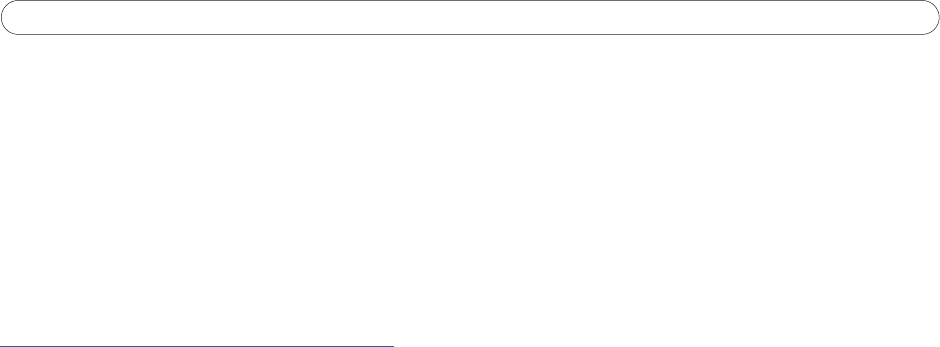
State and Local Election Mail User’s Guide
U.S. POSTAL SERVICE JANUARY 2024
16
PUBLICATION 632
Section VIll:
Election Mail Checklist
This suggested checklist will help ensure a successful
mailing.
Step 1. Call your Postal Service Manager of
Customer Relations.
See Section IV and the Guidance & Resources section
on the Postal Service’s Election Mail webpage at:
https://about.usps.com/gov-services/election-mail/
.
Discuss the specic purpose for the mailing (e.g.,
voter information, ballots, or voter registration).
Discuss when you intend to present the mail to the
Postal Service.
Discuss your delivery date requirements.
Determine where and when the mailpieces must
be presented to the Postal Service to meet your
desired delivery dates.
Discuss if this is a Uniformed and Overseas Citizens
Absentee Voting Act-eligible mailing.
Determine the volume of the mailings.
Determine the class of mail for your mailing.
The Postal Service strongly recommends using
First-Class Mail for Election Mail. If you choose
not to follow this recommendation, consult with
your mailing requirements clerk to determine if
your mailing is eligible for USPS Marketing Mail or
Nonprot USPS Marketing Mail rates.
Determine the best method of receiving return mail
(e.g., street delivery, PO Box, or Caller Service).
Caller Service is a premium service available for a
fee to any customer who:
Requires more than free carrier service.
Receives or plans to receive more mail than
can be delivered to the largest available PO
Box at the facility.
Determine the best time to pick up the mail
each day.
Determine the latest time when an election ofcial
can pick up returns.
Determine the nal date for receiving marked return
Ballot Mail.
Determine the necessary postal equipment and
supplies needed.
Determine the postage payment method.
Determine what forms are needed for mail entry
and postage payment.
Determine if the mailing must meet address
hygiene or Move Update requirements.
Determine if the mailing needs to have an
ancillary service endorsement (e.g., Return
Service Requested).
Determine if the mailing needs any Extra Services
(e.g., Certied Mail, Return Receipt Requested, and
Registered Mail).
Step 2. Determine if the mailing needs to include a
reply piece (See Section II).
Decide if you plan to use Qualied Business Reply
Mail, Business Reply Mail, or Courtesy Reply Mail.
Step 3. Prepare your address list (See Section III).
Decide who should receive the mailpieces.
Compile your address list.
Ensure proper address list hygiene.
Validate physical mailing address accuracy.
Validate that you meet the Move Update standard,
if applicable.
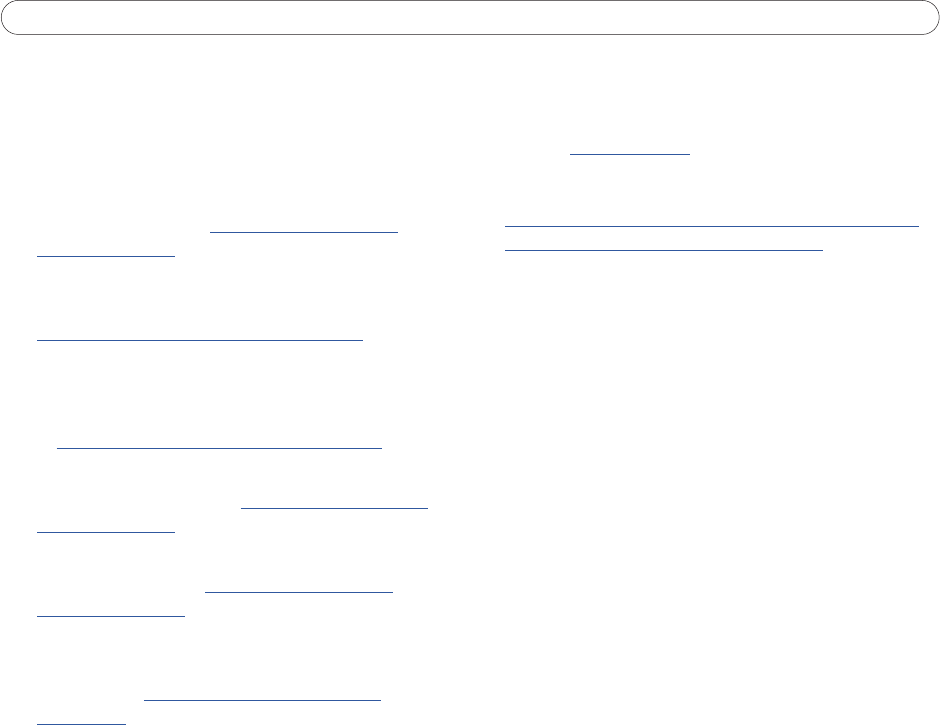
State and Local Election Mail User’s Guide
U.S. POSTAL SERVICE JANUARY 2024
17
PUBLICATION 632
Step 4. File required forms for postage discounts
and other mailing services (if needed) (See
SectionV).
PS Form 3615, Mailing Permit Application and
Customer Prole (for Permit Imprint and BRM
permits) is available at https://about.usps.com/
forms/ps3615.pdf.
PS Form 3624, Application to Mail at Nonprot
USPS Marketing Mail Prices is available at
https://about.usps.com/forms/ps3624.pdf.
PS Form 3623, Request for Conrmation of
Authorization (or Pending Application) to Mail at
Nonprot USPS Marketing Mail Prices is available
at https://about.usps.com/forms/ps3623.pdf
.
PS Form 1093, Application for Post Ofce
Box Service is available at https://about.usps.com/
forms/ps1093.pdf.
PS Form 1093-C, Application for Post Ofce Caller
Service is available at https://about.usps.com/
forms/ps1093c.pdf.
PS Form 6805, BRM/QBRM Application for ZIP+4
Code Assignment/Validation and QBRM Approval
is available at https://about.usps.com/forms/
ps6805.pdf.
Step 5. Review mailpiece design.
The Postal Service recommends that election ofcials
always have all ballot envelope designs reviewed by
a Mailpiece Design Analyst (MDA), each year prior to
printing. This includes both new designs and designs
that were previously used. Mailpiece review typically
occurs within 48 hours of submission. Election ofcials
have, in some instances, made design decisions without
consulting an MDA, which can result in processing
issues and delivery delays. Some uninformed decisions
have resulted in envelopes that were not automation-
compatible and thus did not produce the best results.
For assistance with mailpiece design, connect with
an MDA between 7:00AM – 7:00PM Central Time by
emailing [email protected] or calling 877-672-0007 (select
option 2 for mailing and shipping, then option 2 for MDA).
Also, mailpiece design information is available online at
https://postalpro.usps.com/mailing/mailpiece-design-
analyst-mda-customer-service-help-desk
.
MDAs are trained to do the following:
Provide pre-mailing piece design consultation.
Provide technical assistance to printers, graphic
designers, and envelope manufacturers.
Review outgoing and reply mailpieces for
adherence to Postal Service standards.
Ensure that location of elections ofce/agency
related text and graphics does not interfere
with Postal Service regulations or processing.
Perform tests and reviews of physical
mailpiece samples for reectance, thickness,
size, shape, weight, color, exibility, and
Intelligent Mail barcode (IMb) tolerances.
Analyze readability of actual mailpieces.
Provide assistance with mailpiece design
evaluations of Election Mail.
Verify:
Accuracy of printed delivery address for
reply mailpieces including the BRM ZIP+4.
Ofcial Election Mail logo size and
placement.
Format and placement of endorsements
and other postal markings.
Barcode content including Service Type
ID, Mailer ID and Routing Code or BRM
ZIP+4.
Before artwork is sent to printer, nalize design with
an MDA and submit pre-production proof.

State and Local Election Mail User’s Guide
U.S. POSTAL SERVICE JANUARY 2024
18
PUBLICATION 632
Postal Service design recommendations.
The Postal Service highly recommends that local election
ofcials use available Postal Service support resources
such as Managers of Customer Relations and MDAs
that can help you with design elements.
Use letter-size reply envelopes.
The Postal Service recommends the use
of letter-size reply envelopes. The use of
letter-size reply envelopes will increase the
operational likelihood that the ballot receives a
postmark.
Consider appropriate colors, weight limitations,
proper wording, placement of postal markings, etc.
Use pastel colors (adhere to Postal Service
guidance on automation-compatible colors
to use).
Local election ofces should standardize use
of color for each election type (e.g., primary/
general/special/school.)
Instead of colored envelopes, consider using
colored bands that encircle only part of the
envelopes or borders placed away from postal
elements (such as delivery address, FIM, and
postage area.)
First-Class Mail “Best Practices”
The Postal Service recommends that election
ofcials use First-Class Mail for outbound
Election Mail. Most First-Class Mail is delivered
within 1-5 days.
Use USPS-approved practices to maximize
postage discounts for First-Class Mail (e.g.
presort First-Class Mail).
Create an Informed Delivery interactive
campaign to enhance and extend the voter’s
experience with the election mailpiece.
Include custom images, known as
representative and “ride-along” images,
and a target URL that directs the user to
a digital experience.
Postal Service DMM requirements.
Include the appropriate postage markings.
Balloting materials must indicate, in a
prominent location, the specic amount of
First-Class Mail postage required for the return
of the marked ballot to election ofcials.
Alternatively, the marking “Apply First-Class
Mail postage here” may be printed in the
upper-right corner of the address side of
the envelope used by the voter to return the
marked ballot to election ofcials. The Postal
Service will also accept approved variations of
the described above markings.
The marking requirements may not apply to
balloting materials that are qualied under the
special exemptions specied by USPS (see
DMM 703.8.0 at https://pe.usps.gov/text/
dmm300/703.htm#ep1174014).
For the design of reply envelopes the Postal
Service recommends:
Use the Ofcial Election Mail logo on all
Election Mail because voters recognize the
mail as important. Postal Service workers can
distinguish the mailpiece from the thousands
of other mailpieces processed daily.
Use a uniquely serialized IMb to increase
the electronic visibility of the ballot in the
mailstream and allow the Postal Service to
quickly identify and process on-hand ballots
throughout the mail network.
Ensure that the IMb includes the proper
Ballot Mail Service Type IDentier. The three-
digit codes are listed on PostalPro:
https://postalpro.usps.com/mailing/service-
type-identiers.
Use Informed Visibility Mail Tracking and
Reporting, a free service which provides: 1.
near-real-time mail tracking data for letter and
at pieces, bundles, handling units (trays, tubs,
and sacks), and containers as mail moves
through the mailstream; 2. Ability to better plan
Election Mail mailings and resources, measure
success of each mailing, staff efciently, and
instill condence in voters that use vote-by-
mail; and 3. exible data provisioning and data
delegation, allowing you to receive the data
you want, when you want it, and how you
want it.

State and Local Election Mail User’s Guide
U.S. POSTAL SERVICE JANUARY 2024
19
PUBLICATION 632
Step 6. Inform voters what to expect if they
choose to use the mail to vote.
For domestic, non-military voters who choose
to use the mail to return their completed ballot,
the Postal Service recommends that they mail
their completed ballot before Election Day,
and at least one week before the deadline by
which their completed ballot must be received
by their local election ofcial. Some states may
recommend allowing even more time for mailing
completed ballots. Election ofcials should
consider advising voters about the Postal Service's
recommendations.
For APO/FPO addresses, the Military Postal
Service Agency recommends that military
personnel serving overseas follow the return-by-
mail date for their location published at https://
usps.com/electionmail.
A voter can ensure that a postmark is applied to
his or her return ballot by visiting a Postal Service
retail ofce and requesting a postmark from a retail
associate when dropping off the ballot. If asked,
the retail unit employee must hand-cancel the ballot
upon accepting custody of the mailpiece.
Step 7. Prepare and present the mailing (See
Section VII).
Print mailing in time for preparation and delivery to
the Post Ofce facility.
Obtain postal supplies and equipment (e.g., trays,
sacks, labels, stickers, and tags).
Prepare mailing for delivery to the Post Ofce.
If applicable, obtain and complete postage
statements to be presented with the mailing:
If using First-Class Mail, use one or more
forms in the 3600 series.
If using USPS Marketing Mail, use one or more
forms in the 3602 series.
Afx Tag 191 on all trays and sacks with mailings
of ballots. This bright green tag provides a high
degree of visibility on Ballot Mail as it enters Postal
Service processing centers.
To obtain Tag 191, election ofcials should
contact their Business Mail Entry Unit which
can be found at https://postalpro.usps.com/
locators/nd-bme.
Or visit http://about.usps.com/forms/ps1910.
pdf to order Tag 191 online.
NOTE: Tag 191 can be applied ONLY to Ballot Mail; it
cannot be used for any other type of Election Mail.
Present mailing, postage statement, and,
if necessary, check (payment) for funding
postage account.
Note: The following are amongst the many trademarks of the
United States Postal Service®: ACS™, AEC II®, Business
Reply Mail®, CASS™, Certied Mail®, Courtesy Reply Mail™,
DMM®, DPV®, First-Class Mail®, IMM®, IMb®, IMM®,
Informed Visibility® Mail Tracking and Reporting, NCOALINK®,
Ofcial Election Mail logo®, PO Box™, Post Ofce™, Postal
Explorer®, Postal Service™, Priority Mail Express®, Qualied
Business Reply Mail™, QBRM™, Registered Mail™, USPS.
com®, USPS®, USPS Eagle logo, USPS Marketing Mail®, ZIP
Code™, ZIP+4®.
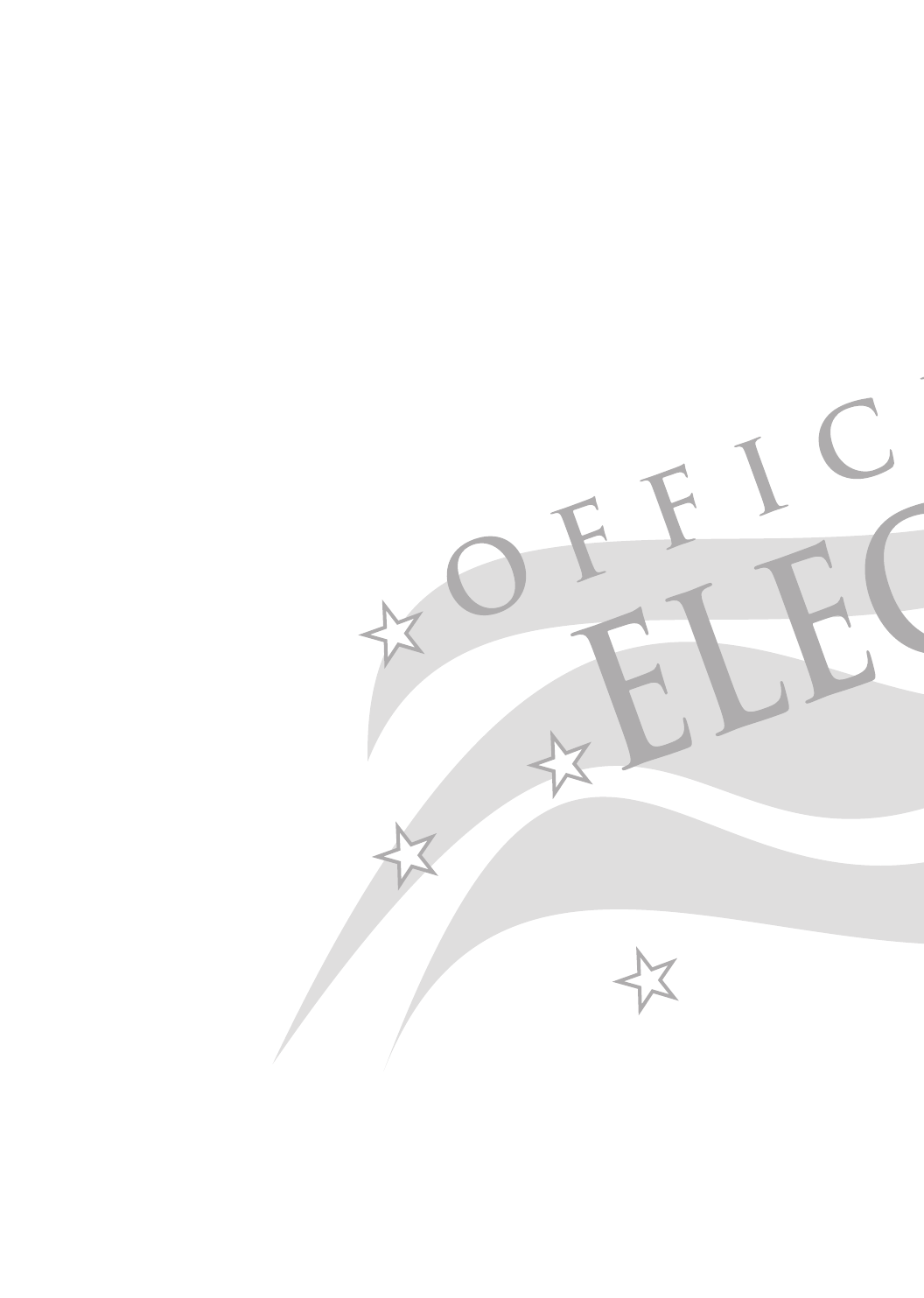
© U.S. POSTAL SERVICE JANUARY 2022
